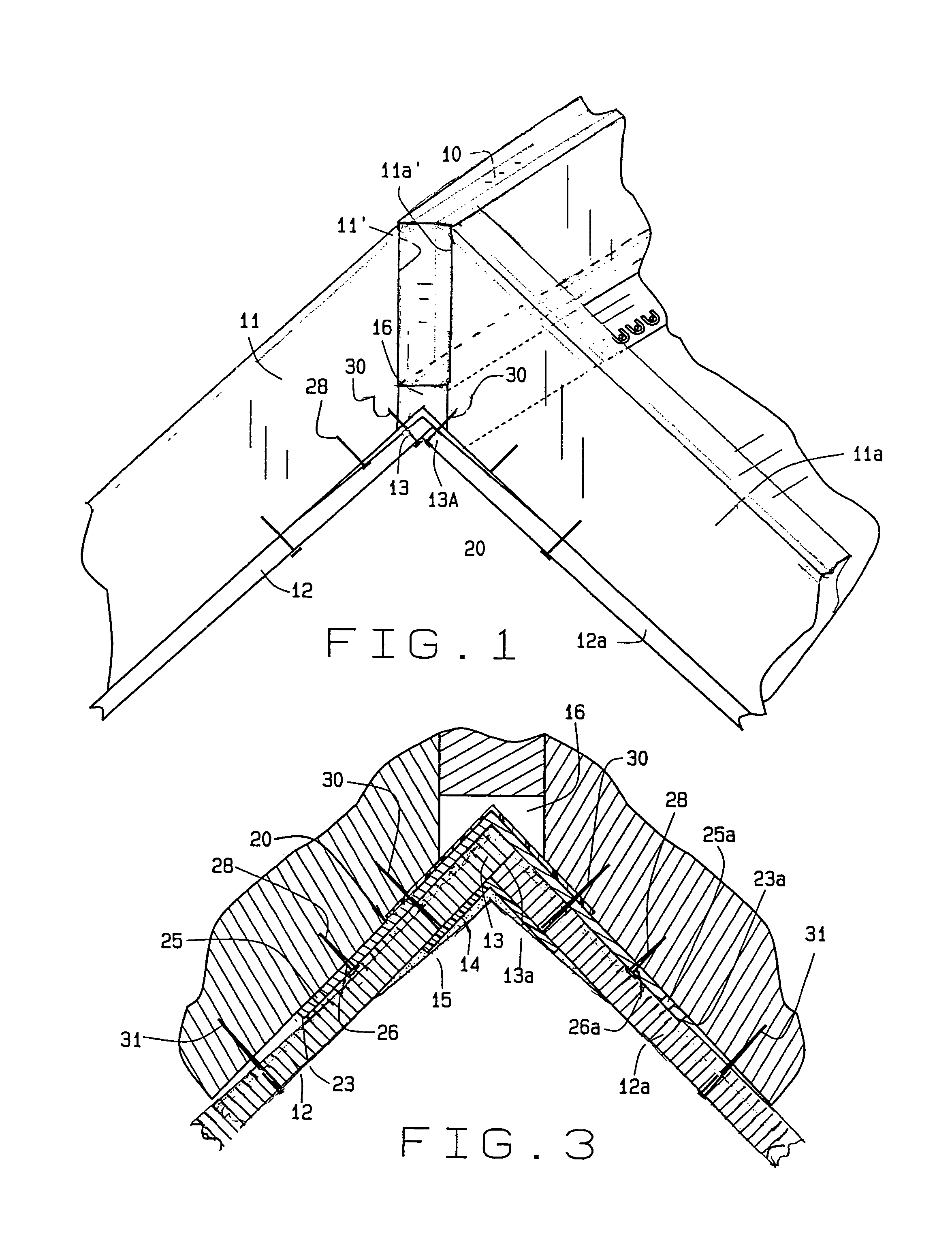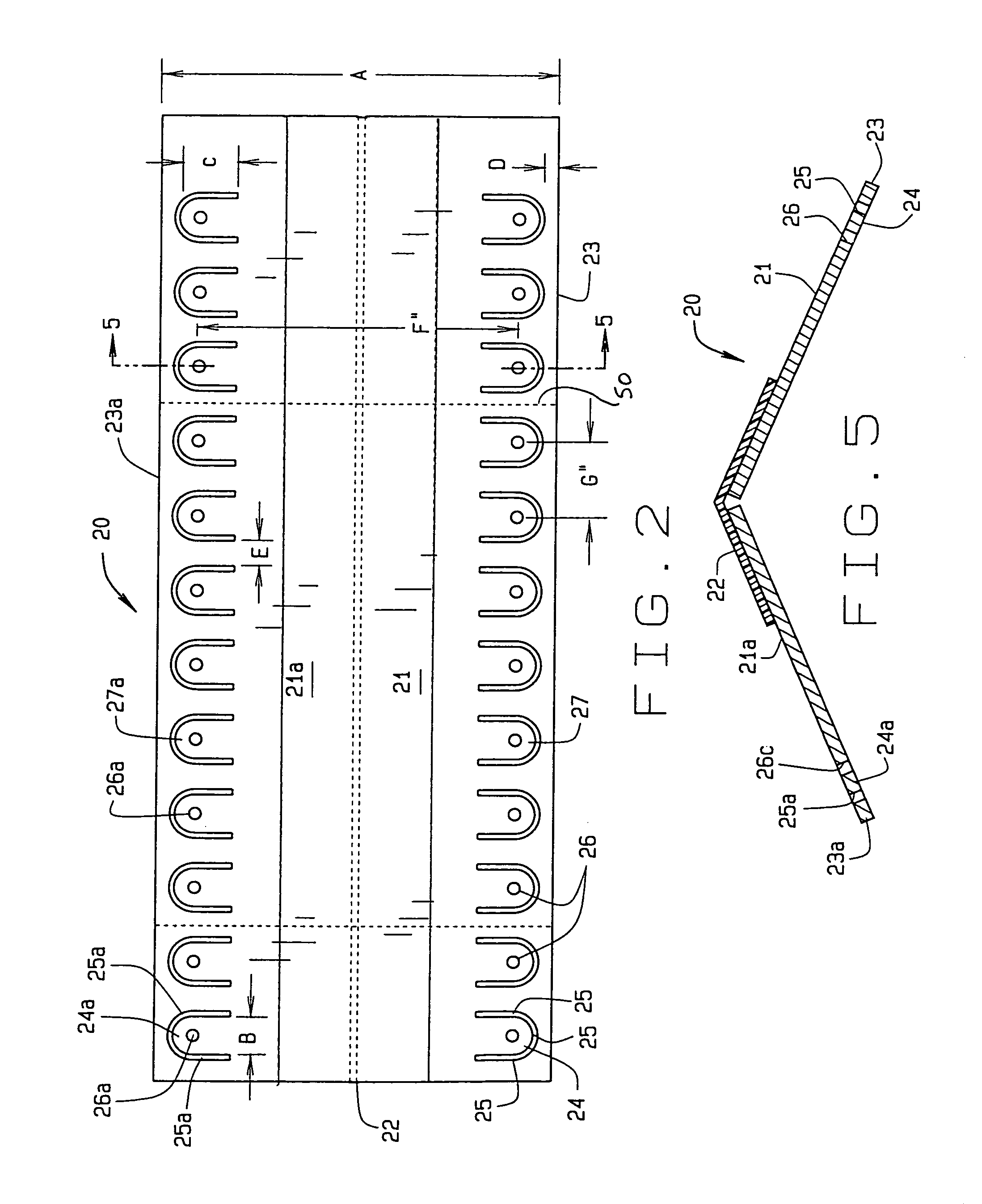Hinged metal connectors and joint constructions
a technology of metal connectors and joints, applied in the direction of construction, covering/lining, building construction, etc., can solve the problems of high cost of contactors, insufficient ageing or even being left, and large amount of lumber
- Summary
- Abstract
- Description
- Claims
- Application Information
AI Technical Summary
Benefits of technology
Problems solved by technology
Method used
Image
Examples
Embodiment Construction
[0027]FIG. 1 shows a typical vaulted ceiling room structure which includes a ridge board 10 and inclined ceiling rafters 11,11a which butt against the ridge board 10 and are fastened thereto. Since the rafters 11,11a are cut on an angle, the cut edges 11′, 11a′ are longer than the width of the ridge board 10 which leaves a space 16 beneath the ridge board 10. Fastened to the ceiling rafters 11,11a in a conventional structure are drywall boards 12,12a whose inner ends 13,13a abut beneath the ridge board 10 in the space 16. Conventional drywall tape 14 (FIG. 3) is positioned over the joint between the abutting edges 13,13a, and the tape 14 is covered by drywall compound 15 which is finished smooth by the taper. The drywall tape 14 can be of various conventional types but a preferred form of the tape 14 is covered by U.S. Pat. Nos. 5,418,027 and 5,037,686 owned by the inventor of this application and sold under the trademark STRAIT-FLEX® by Strait-Flex International, Inc. of St. Louis,...
PUM
 Login to View More
Login to View More Abstract
Description
Claims
Application Information
 Login to View More
Login to View More - R&D
- Intellectual Property
- Life Sciences
- Materials
- Tech Scout
- Unparalleled Data Quality
- Higher Quality Content
- 60% Fewer Hallucinations
Browse by: Latest US Patents, China's latest patents, Technical Efficacy Thesaurus, Application Domain, Technology Topic, Popular Technical Reports.
© 2025 PatSnap. All rights reserved.Legal|Privacy policy|Modern Slavery Act Transparency Statement|Sitemap|About US| Contact US: help@patsnap.com



